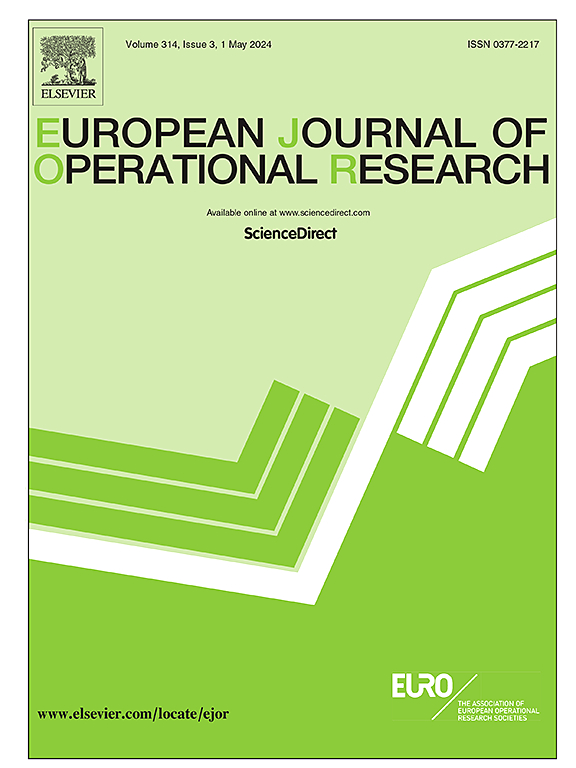Counterfactual explanations for linear optimization
IF 6
2区 管理学
Q1 OPERATIONS RESEARCH & MANAGEMENT SCIENCE
引用次数: 0
Abstract
In recent years, the concept of counterfactual explanations (CE) has become increasingly important in understanding the inner workings of complex AI systems. In this paper, we introduce the idea of CEs in the context of linear optimization and propose, explain, and analyze three different classes of CEs: relative, weak, and strong. We discuss in which situation each type of CE is needed and examine the structure of the optimization problems that arise from considering them. By detecting and leveraging the underlying convex structure of the relative CE problem, we demonstrate that computing the relative CEs takes the same order of time as solving the original problems. We also address the computational challenges associated with weak and strong CE problems. To illustrate our findings, we present a case study with data sourced from the World Food Programme in which we calculate each type of CE. Finally, we conduct comprehensive numerical experiments using the NETLIB library to demonstrate that relative CE problems can be solved as quickly as solving the original linear optimization problem.线性优化的反事实解释
近年来,反事实解释(CE)的概念在理解复杂人工智能系统的内部运作方面变得越来越重要。在本文中,我们在线性优化的背景下引入了ce的概念,并提出、解释和分析了三种不同类型的ce:相对、弱和强。我们将讨论在什么情况下需要每种类型的CE,并检查考虑它们所产生的优化问题的结构。通过检测和利用相对CE问题的底层凸结构,我们证明了计算相对CE所需的时间与解决原始问题所需的时间相同。我们还解决了与弱CE和强CE问题相关的计算挑战。为了说明我们的发现,我们提出了一个案例研究,其中数据来自世界粮食计划署,我们计算了每种类型的CE。最后,我们使用NETLIB库进行了全面的数值实验,以证明相对CE问题可以像求解原始线性优化问题一样快速求解。
本文章由计算机程序翻译,如有差异,请以英文原文为准。
求助全文
约1分钟内获得全文
求助全文
来源期刊

European Journal of Operational Research
管理科学-运筹学与管理科学
CiteScore
11.90
自引率
9.40%
发文量
786
审稿时长
8.2 months
期刊介绍:
The European Journal of Operational Research (EJOR) publishes high quality, original papers that contribute to the methodology of operational research (OR) and to the practice of decision making.
 求助内容:
求助内容: 应助结果提醒方式:
应助结果提醒方式:


